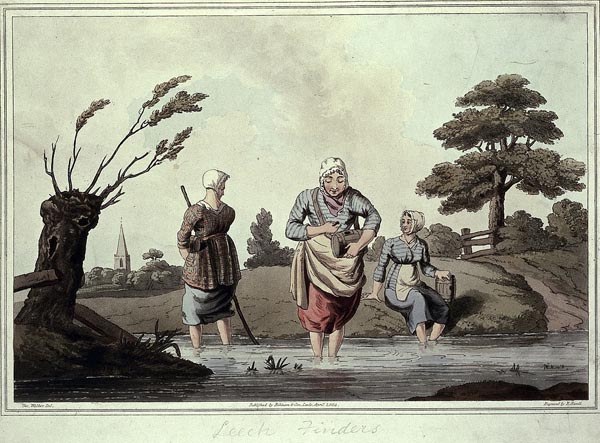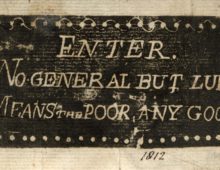The Surgeon’s Blade: Leeches, humours and Napoleon’s piles
August 18, 2017 - Mick Crumplin in News & Blog Posts, The Surgeon's Blade
Mick Crumplin continues his medical blog by looking at the use of leeches in medicine and their use prior to the Battle of Waterloo
The practice of bleeding patients was used through centuries. It was based on the Galenic theory of the balance of the four humours of the body (blood, phlegm, black and yellow bile).
The humours were thought to make up a person’s personality and habitus. Normally they were considered in balance. Patients were however considered to be of varying temperament or type, for instance, ‘phlegmatic’ or ‘bilious’.
But if a patient was feverish or of a high colour, there was a clear imbalance and taking blood from the patient would ‘rebalance’ the equilibrium, so restoring the health of the person. The practice was used widely in the armed services and in civil practice – especially with fevers, head wounds and chest conditions.
Although it was felt by some doctors, that although, two hundred years ago, bleeding might be not always the wisest course in patients weakened or already anaemic, it was a preventative with the ever-present threat of infection.
Coupling venesection (blood- letting) with emesis and purgation (making the patient vomit or have diarrhoea, respectively) and taken with a low (simple and un-rich) diet, was felt to be the way to reduce septic risk. This group of useless but commonplace treatments was known as the ‘antiphlogisitc regimen’.
One common method of blood-letting was by the use of leeches. Leeches were gathered from ponds around Bordeaux and in the north of Britain. Leeches became especially popular in the early nineteenth century. In the 1830s, the French imported about forty million leeches a year for medical purposes, and in the next decade, England imported six million leeches a year from France alone.
Leeches were carried in perforated white metal boxes or kept in elegant medicine jars. These latter were too fragile to be carried on campaign. These rather unpleasant animals survive by biting into animal or human flesh and depositing an anticoagulant chemical to prevent the blood from clotting whilst the animal fed.
One medicinal leech can remove 20-30ml. blood, thus the application of 20 leeches could deprive the patient of nearly a pint of blood! Leeches are difficult to remove. Application of salt, a lighted cigarette end or a cautery, have all been used by soldiers when leeches attached themselves to the body on campaign.
Napoleon’s piles
Probably the most notorious example of the use of leeches (in this case to ‘decongest the swollen affected parts), was with the management of Napoleon’s piles.
The application of 25 leeches to Bonaparte’s imperial perineum by Baron and Chirurgien en Chef, Jean Dominique Larrey, the day before Waterloo probably eased the condition for the next day!
This data was apparently obtained from Prince Jerome’s personal diary. Clearly the Emperor had recently remained in the saddle too long.
It was sometimes joked that Scottish surgeons would cut off the tails of their leeches to get each animal to drain more blood. Modern day use of leeches is usually restricted to decongesting areas after (replacement limb or digit) surgery. Often whilst the arterial blood goes into the area, the venous blood is slow to drain away for various reasons. The leech will remove excessive venous blood from the area.




